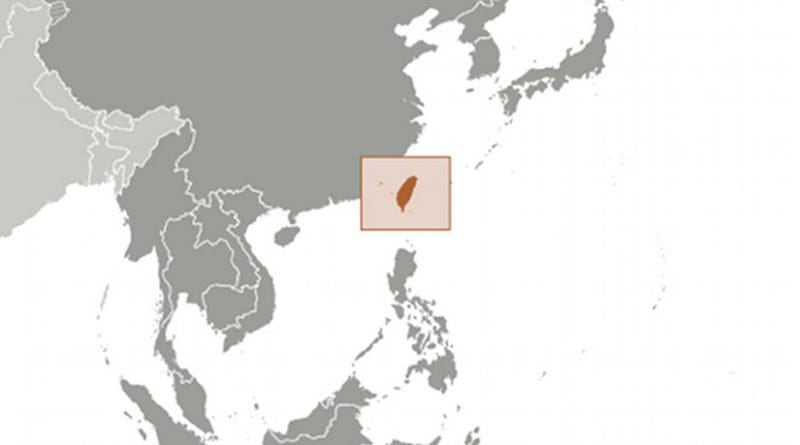India-Taiwan Relationship: Need To Emerge From The Chinese Shadow – Analysis
By Tridivesh Singh Maini and Manoj Kumar Panigrahi*
The election verdict of Taiwan which came out on Jan 17, 2016 was significant for many reasons. Tsai Ing-wen from Democratic Progressive Party (DPP) was elected as the next President; she happens to be the first women president of Taiwan. Tsai has also been a fervent supporter of independence from China. A recent survey conducted by United Daily News shows that almost 3/4th of Taiwanese (73%) consider themselves Taiwanese, and not Chinese . This clearly reiterates the point that the pro-independence sentiment in Taiwan is on the rise.
At the DPP’s 29th anniversary, the President-elect categorically stated that along with neighbours in South East Asia, India too would be on her priority list. Said Tsai, ‘another one of our international priorities is to build up our relations with our neighbors in Southeast Asia and the Indian subcontinent’. I am pleased to announce that a future DPP administration will pursue a ‘New Southbound Policy’ in the years ahead’.
The India-Taiwan relationship has witnessed significant strides in the political and economic sphere. India has begun to de-hyphenate the India-Taiwan relationship from the India-China relationship and taken some steps which have annoyed China. When India permitted the setting up of The Taipei Cultural Centre at Chennai, there were strong objections from the Chinese, but India went ahead. In fact, when the former President Ma Ying-jeou was en-route to Africa, he was granted a 90-minute stopover at Mumbai airport despite the many apprehensions that were being sounded against the move. In 2014, Vice President Wu Den-yih was permitted a transit stop at New Delhi airport on his way to Europe.
In the economic sphere too, ties between India and Taiwan have received considerable impetus and significant interest. Around 70 Taiwanese companies have invested in India till now. As per the data given by Reserve Bank of India, India imported around INR 19.82 billion (USD 30 million) of goods until October 2015. Companies like Hon Hai Precision Industry Co (FoxConn), Sanyang Corporation, Gigabyte Technologies, Continental Engineering, CTCI, Apache and Feng Tay (shoes) have already invested in India. Foxconn has invested 5 Billion USD in the state of Maharashtra.
Taiwan also happens to be the 4th biggest exporter of machinery tools to India, Taiwanese companies can set up manufacturing units in India, and they can utilize India as a gateway to the Middle East and Africa, due to its location a number of other countries are beginning to look at India as a connector to other regions, there is no reason for Taiwan to not do so. There is potential to give a further thrust to this relationship, given the synergies between both countries. India still is Taiwan’s 19th largest trade partner and there is potential to aim for higher. Both sides need to think of fresh approaches. Indian needs to allay the fears of Taiwanese investors and if high level political engagement is not possible, Chief Ministers of states and other state government officials should be allowed to visit Taiwan, and reach out to potential investors. Currently this is minimal.
Taiwan on its part should examine new investment destinations in India and focus on the Eastern part of India which has lagged behind development to give more investment and to attract the talent pool that this side of India has, and which can give a big boost to the trade between the two countries. Especially if Taiwanese shipbuilding and ports can sign a Memorandum of Understanding (MoU) with the Eastern ports of India, it can save a lot of time and money for the business persons on both the sides.
Apart from the economic sphere, there are a number of other areas which can be tapped.
The first is greater interaction between university students and language training. There is a huge interest amongst Indian students and professionals to learn Chinese. Taiwanese Universities need to explore this by signing more Memorandum of Understanding (MoUs) with Indian Universities, and have more students and professors spending time in each other’s countries. India can also explore the possibility of having English Language Training Centers, through its flagship program under ITC, these have been successful in other parts of the world.
Second, in the sphere of tourism and entertainment too, there is immense potential that these two countries can harness. While the Buddhism circuit of India can have a huge interest among Taiwanese as they mostly follow Buddhism. Taiwan too is an untapped tourist destination for Indians even though Taipei is an interesting tourist spot which is well located. Taiwan has also eased out visa procedures, Indians having a valid UK or US visa do not need a visa. Bollywood which is very popular in Taiwan should explore the possibility of shooting movies Taiwan. Similarly Taiwanese movies can also be shot in the diversified landscape of India. There should be events done by both the sides to promote each other movies by conducting various road shows and participating in film festivals. The total number of tourists inflow into Taiwan in 2015 was 10.44 million as compared to 7.8 million to India.
Third, both sides can cooperate on intelligence sharing on terrorism especially as both the sides are good in software technology they can cooperate on cyber intelligence sharing and other key strategic issues.
For achieving the above steps, India needs to shed its reticence and look at the relationship beyond the China factor. A stronger relationship with Taiwan will bolster India’s Act East Policy and also help schemes like Make in India
*Tridivesh Singh Maini is Assistant Professor at the Jindal School of International Affairs, O.P. Jindal Global University, Sonipat and Manoj Kumar Panigrahi is doing his Masters at the Jindal School of International Affairs, O.P. Jindal Global University, Sonipat and currently an intern at Information and Sharing Analysis Centre, New Delhi. They can be reached at: [email protected]

